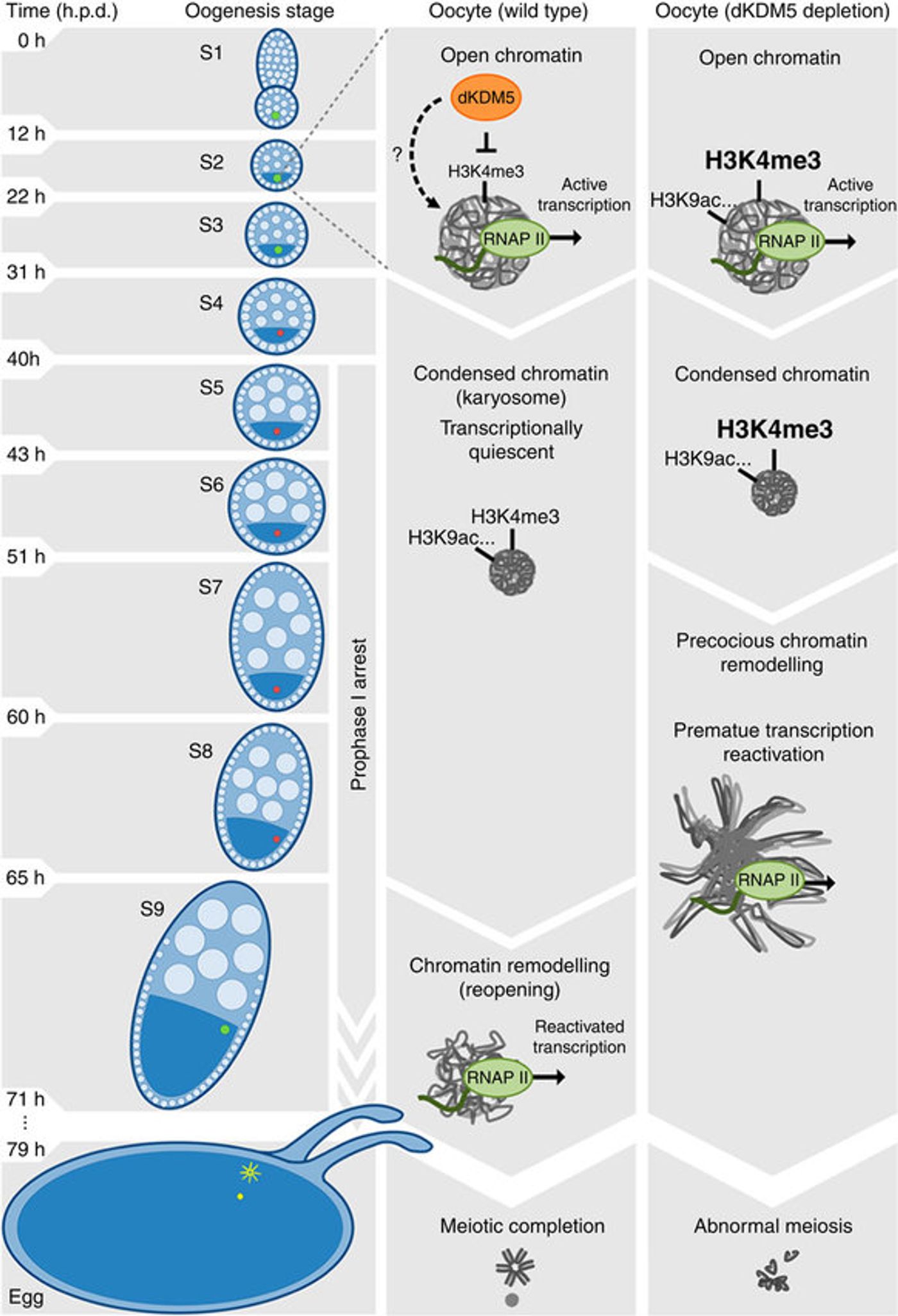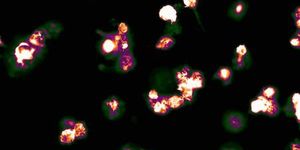Egg cells, or ovules in animals, remain dormant for many years after the start of reproductive age, and that is one reason for the decline in fertility in women as they grow older. An ovary can contain thousands of ovules that must be ready for ovulation years after they are produced, so researchers set out to learn more about how they are signaled to wake up.
In work published in
Nature Communications, scientists working in collaboration at Instituto Gulbenkian de Ciencia (IGC; Portugal), University of Algarve (Portugal), and the University at Albany (USA) have found a molecular alarm clock that awakens ovules in the fruit fly. Dysfunction in that clock results in female fertility defects.
Fruit flies have been a commonly used model in biological research for over a century. "Similarly to humans, fruit fly ovules also have a resting period during meiosis - the specialized cell division required for the formation of healthy reproductive cells. Therefore, this organism could help us understanding exactly how the ovule is able to turn back on its genes at the right time, a biological mystery until now,” said Paulo Navarro-Costa, co-first author of this study and a researcher at the IGC.
Once they are produced, ovules must rest. To induce that hibernation, genes are silenced. Those genes must be able to turn back on again at any time, enabling them to grow and be ready for ovulation. The researchers took an in depth look at the epigenome of the fruit fly and saw rich and dynamic features. Their results indicated that the timing of the alarm clock is linked to modifications of the chromosome; specifically, changes that occur because of a molecule called dKDM5.
The research leader at IGC, Rui Martinho, explains that, “when ovules begin to form, a protein called dKDM5 modifies the chromosomes in a way that they can only activate their genes at the right time. If this alarm clock is incorrectly set, for example due to defects in the dKDM5 protein, females become infertile because their ovules fail to complete meiosis."
The fact that this clock is set so early on might be a surprise to many. "These results illustrate just how important for female fertility is the early life of the ovule. For instance, in the case of humans, the early stages of ovule formation occur before women are born, while they are still in their mother's womb. This prenatal development period is therefore critical for the future formation of healthy reproductive cells,” said Navarro-Costa.
Sources:
AAAS/Eurekalert! via
IGC,
Nature Communications










